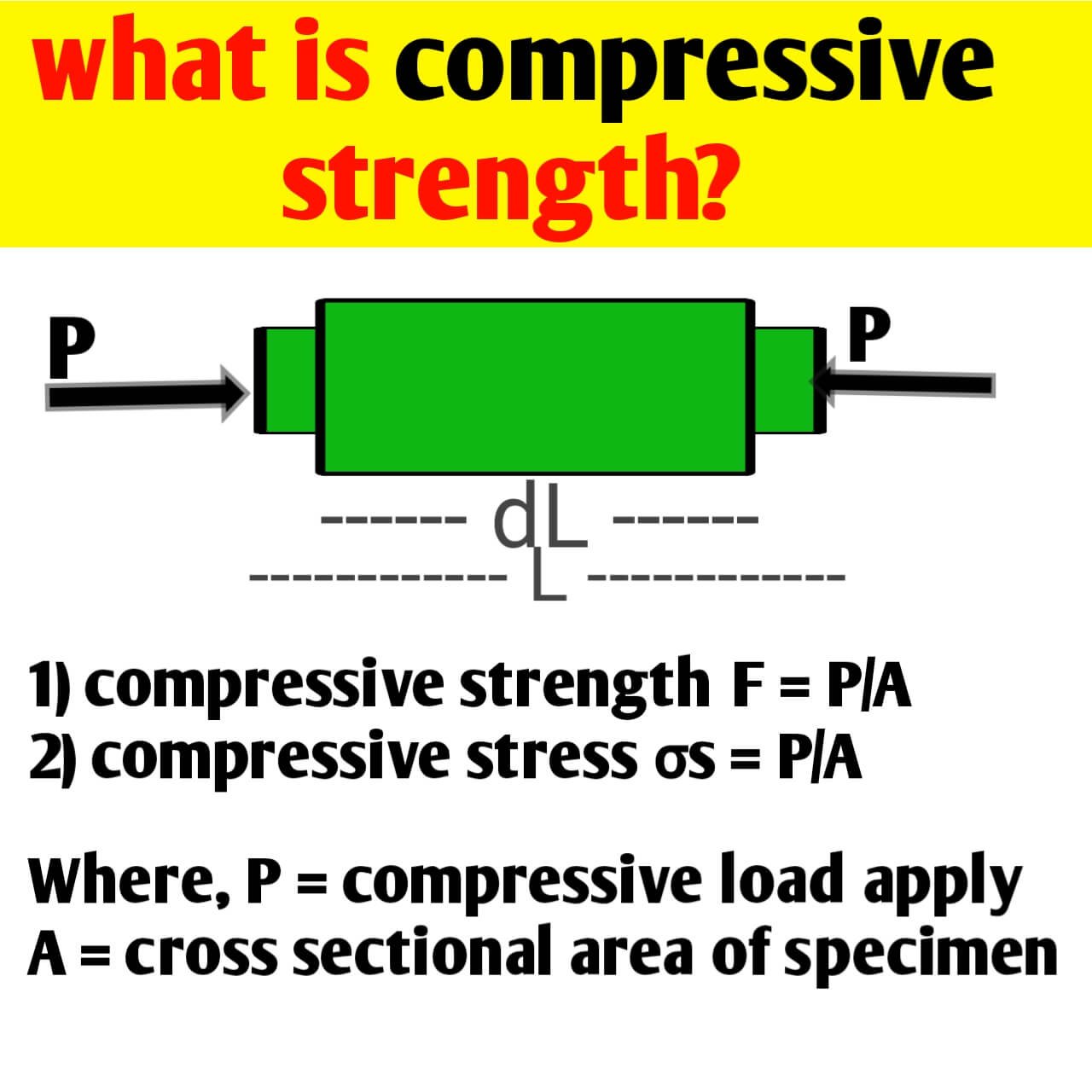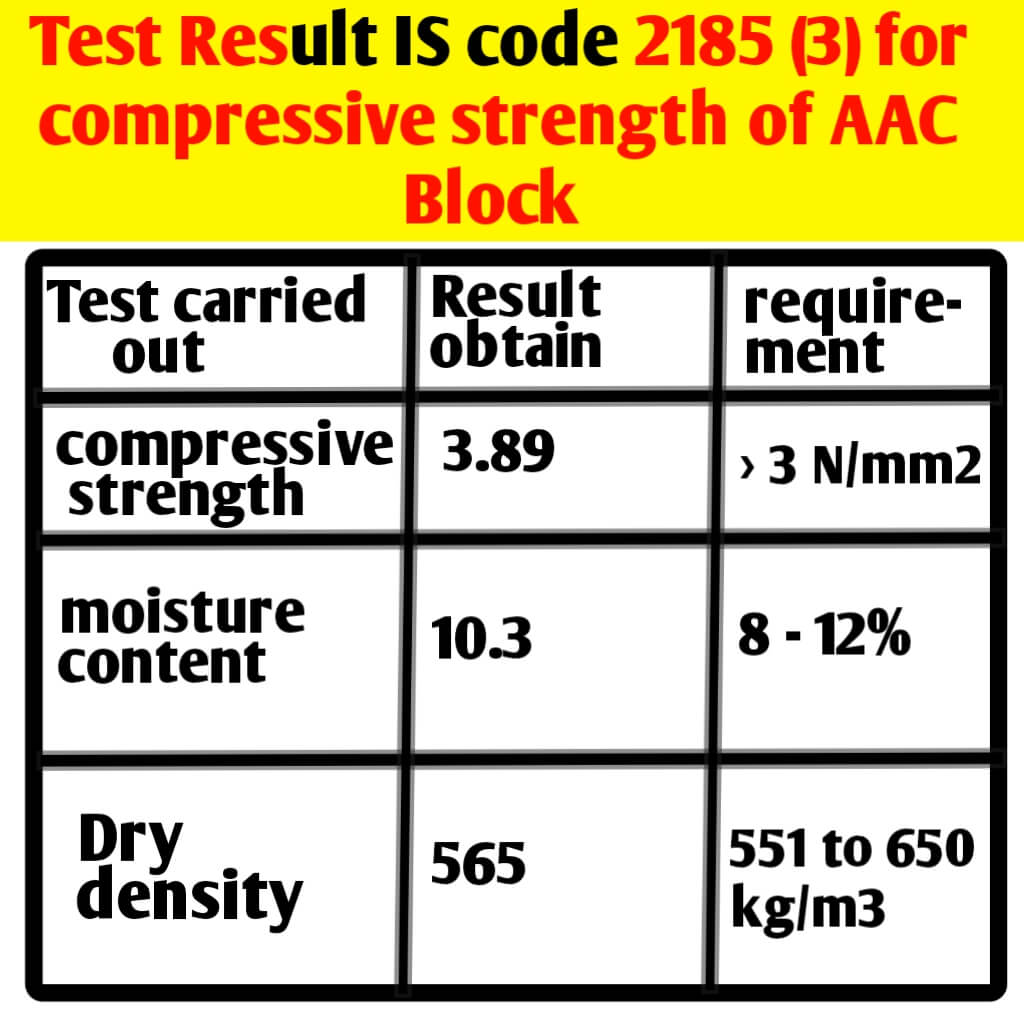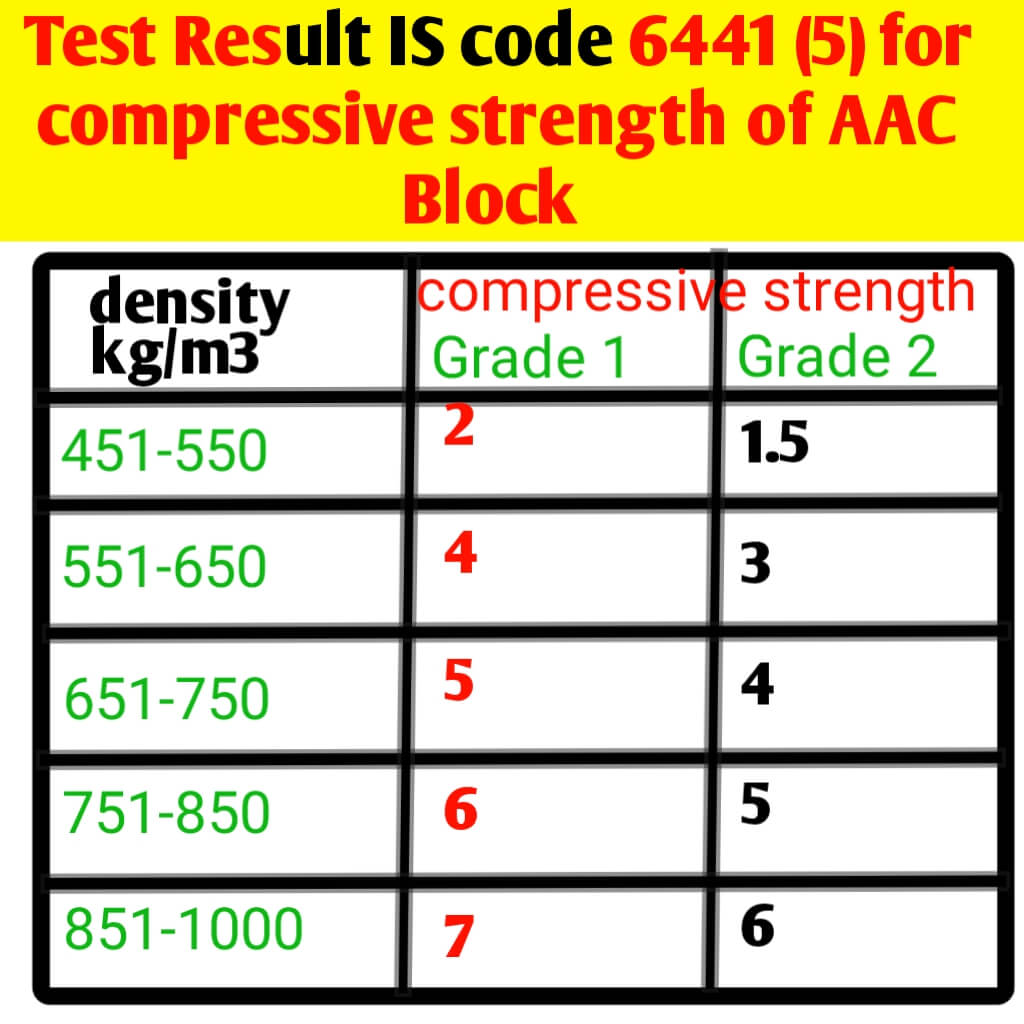The compressive strength of AAC (Autoclaved Aerated Concrete) blocks typically ranges from 3 to 4 N/mm² (MPa). Keep in mind that actual values may vary depending on the specific manufacturer and block composition.
Compressive strength of AAC Block – Test procedure & Result, hi guys in this article we know about compressive strength of AAC Block and compressive strength test of ACC Block Procedure and a result and also discuss about dry density and moisture content of AAC Block.
Full form of AAC block is Autoclaved aerated concrete,simply it is AAC, it is potential building material, is gaining popularity due to its lightweight, thermal insulation and sound absorption qualities.

This article describes compressive strength of AAC block and their dry density. The following properties of AAC blocks were consider moisture content, initial rate of absorption, water absorption, dry density, compressive strength and tensile strength.
The compressive strength of AAC block masonry is less than that of the compressive strength of individual AAC block. The average compressive strength of masonry using different proportions of cement–sand mortar ranged from 1.96–2.58 N/mm2 (MPa), whereas the average compressive strength of individual AAC block is 3 N/mm2 (MPa).
What is Compressive strength?
Compressive strength is the capacity of material or structure to resist or withstand under compressive load. The Compressive strength is determined by the ability of the material to resist failure in the form cracks and fissure. The maximum load at which the specimen breaks is taken as a compressive load.

Compressive strength is represented by F which is equal to F = P/A, where F = compressive strength,P= total load applied by CTM machine & A = cross sectional surface area.
Generally compressive strength of material measured in psi (pound force per square inch in USA) & MPa (mega pascal) or N/mm2 in India and other country. MPa in another terms represented as N/mm2. And 1MPa = 145.038 psi.
Compressive strength of AAC block
Compressive strength of AAC Block measured in different unit like N/mm2,MPa & psi. The compressive strength of AAC block masonry is less than that of the compressive strength of individual AAC block. The average compressive strength of masonry using different proportions of cement–sand mortar ranged from 1.96–2.58 N/mm2 (MPa), whereas the average compressive strength of individual AAC block is ranging between 3 to 6 N/mm2.
● IS code 2185 (3): this is code describe about calculation of dry density & compressive strength of AAC Block

● Dry density of AAC block: Assume AAC block size 600mm× 200mm×125mm have weight = 11.19 kg, its volume is = 0.6×0.2×0.125m3 = 0.015m3, so dry density = volume/Area = 11.19m3/0.015 = 746 kg/m3, so 746 kg/m3 is dry density of AAC block.
#Summary: 551 – 850 kg/m3 is dry density of AAC Block
Compressive strength of AC Block in N/mm2
● Compressive strength of AAC Block:- Compressive strength is calculated by CTM machine whose CTM plate Area = 180×230 mm2 =41400mm2 and load applied is 175 kN, so compressive strength of AAC block = load/Area = 175 ×1000 N/41400mm2 = 4.23 N/mm2, so 4.23N/mm2 is compressive strength of AAC Block.
#Summary: 3 – 6 N/mm2 is compressive strength of AAC Block.
Note: IS code 2185 (3) does not describe about how to check compressive strength of AAC blocks and their Test procedure, it’s only describe about calculation of dry density and compressive strength.
Compressive strength test of AAC Block Procedure & Result
Autoclaved aerated concrete block has separate IS code that gives the step-by-step procedure to test compressive strength. According to IS 6441 (5) remembering 4 point for compressive strength Test procedure.
● conduct the test on specimen size 15cm×15cm×15cm.
● moisture content at the time of testing should be 10% +_ 2%.
● if block thickness is less than 15 centimetre ,make two slice of 7.5cm and build up the 15cm side.
● direction of loading should be perpendicular to the direction of rising along the length.
According to IS code IS 6441 (5) compressive strength divided into grade 1 and grade 2,their details are following:
Table 2: dry density and compressive strength

Dry density compressive strength
in kg/m3 grade1 grade2
● 451 – 550 2 1.5
● 551 – 650 4 3
● 651 – 750 5 4
● 751 – 850 6 5
● 851 – 1000 7 6
Compressive strength test procedure for AAC block
There is a procedure to test compressive strength step by step
● a) There is a bigger challenging work to cut specimen size of 150mm × 150mm × 150mm of AAC block, if we use handhandle tool to cut the specimen, it disturb the internal structure of block,so avoid it. It should be cut in a specific size by cutting machine.
Why it is necessary to cut AAC Block in a specific size 15cm? Because 1 AAC Block has higher dimension then require
● b) generally specific specimen 15cm of AAC block has high moisture content about 20% to 22%, so it would be drying in oven at 50℃, optimum moisture content should be 10% +_ 2%
● c) now take measurement of cross sectional area of specimen = 150mm × 150mm = 22500mm2.
● d) now put the specimen into CTM machine to find out compressive strength, care should be taken that direction of loading should be perpendicular to the direction of rising along the length.
● e) now applying load perpendicular by CTM machine @14N/mm2/minute gradually on specimen.
● f) in dry density range 651 to 750N/mm2 and compressive strength Grade 2 suppose applying 112.5 kN load, AAC block will break,The maximum load at which the specimen breaks is taken as a compressive load.
● Calculation and result: cross sectional area of given specimen A = 22500mm2 and compressive load = 112.5kN, then AAC Block compressive strength F= P/A = 112500N/22500mm2 = 5N/mm2, so 5N/mm2 is compressive strength of specimen of AAC Block.
◆You Can Follow me on Facebook and Subscribe our Youtube Channel
You should also visits:-
1)what is concrete and its types and properties
2) concrete quantity calculation for staircase and its formula
Very usful website. Thank you very much
Informative article , keep up the good works. Thanks for sharing
your Compressive strength Calculation is totally wrong please correct it as per IS. Bad experience